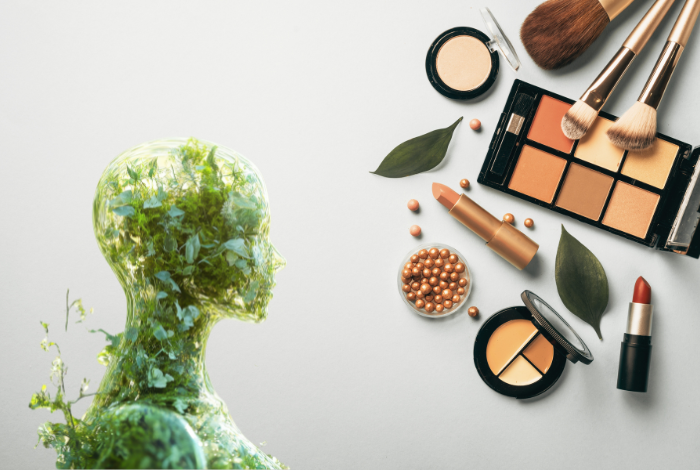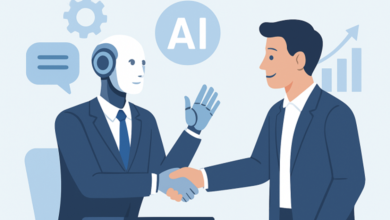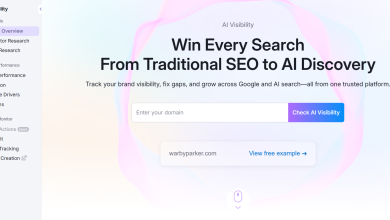
Sustainability has become one of the defining business challenges of this decade.
But while most conversations about “green tech” center on renewable energy or manufacturing efficiency, some of the most interesting progress is happening in a less expected place: beauty.
The beauty industry is a $600-billion global business that shapes trends, identity, and culture – and yet, it faces a serious waste problem.
Every year, the sector produces an estimated 120 billion packaging units, much of which ends up in landfills. Millions of physical testers and returned products are discarded due to hygiene restrictions. And for an industry built on self-expression, this growing environmental cost poses an identity crisis of its own.
The good news? AI is quietly reshaping the picture. Beyond personalization and profit, it’s becoming a catalyst for more sustainable operations – cutting waste, optimizing supply, and transforming how products are tested, chosen, and produced.
The Waste Problem Behind the Glamour
Beauty’s environmental footprint runs deeper than packaging. Returns, unsold inventory, and in-store testers generate an enormous amount of hidden waste. In traditional retail, shoppers sample dozens of products before buying. Online, mismatched shades and expectations lead to costly returns – items that often can’t be resold.
Studies show that only 9% of global plastic waste is recycled, and the beauty sector contributes disproportionately due to mixed-material packaging and small container sizes. Consumers are increasingly aware of this: surveys show that more than 60% of beauty buyers are willing to change purchasing habits to support sustainability.
The challenge is not just producing “cleaner” formulas or recyclable packaging – it’s rethinking the entire product journey. And that’s where AI comes in.
Virtual Try-On: Cutting Waste Before It Happens
Artificial intelligence has already transformed how consumers shop for beauty, and virtual try-on technology is the clearest example.
By allowing shoppers to test makeup digitally – instantly visualizing products on their own face – brands can eliminate much of the need for physical testers and disposable samples.
Each virtual trial that replaces a single-use tester or an unneeded return, represents tangible environmental savings. For global brands serving millions of customers, those interactions add up to massive reductions in material waste.
At the same time, the technology improves the customer experience: when users can see how a lipstick or foundation will look in real lighting, confidence rises, conversion rates increase, and returns fall.
In other words, AI doesn’t just make shopping easier – it makes it smarter. Waste is prevented not by regulation, but by better decisions.
Smarter Shade Matching and Predictive Guidance
Foundation shade mismatches are one of beauty’s most persistent pain points – and one of its quietest sources of waste.
AI-driven shade-matching tools now analyze skin tones with far greater accuracy than the human eye, factoring in undertones and lighting to deliver highly personalized results.
This precision means fewer incorrect purchases, fewer discarded bottles, and happier customers who trust the brand to “get them right.” But the implications go even further.
By aggregating data from thousands of interactions, these systems can detect demand patterns in real time – revealing which shades sell fastest in each region, or which undertones are underrepresented in current product lines.
That insight feeds directly into more efficient manufacturing and distribution, reducing overproduction and aligning inventory with actual consumer needs. Sustainability, in this sense, isn’t a separate initiative. It’s the natural outcome of intelligence applied to the product lifecycle.
Predictive Personalization: From Individual Experience to Industry Efficiency
The true power of AI-driven sustainability lies in prediction. When every interaction – every try-on, every recommendation, every search – becomes a data point, brands gain a real-time understanding of what customers want and what they don’t.
Predictive models can identify emerging trends months before they appear on shelves, helping companies avoid overstocking slow-moving items and underestimating new demand. The same algorithms that personalize the shopping journey for one customer also generate the intelligence needed to streamline production for millions.
In a traditional supply chain, waste is treated as a cost of doing business. In an AI-enhanced one, it becomes a preventable variable. The result is not only a smaller environmental footprint, but a leaner, more resilient business.
Clean Beauty Meets Clean Data
The rise of “clean beauty” has often focused on ingredients – formulations free from certain chemicals or ethically sourced materials. But the next evolution of clean beauty will be digital. As brands adopt AI, transparency and data ethics become part of the sustainability conversation.
Consumers increasingly expect brands to handle data as responsibly as they handle the planet’s resources. Ethical AI – systems trained on inclusive, diverse, and representative datasets – ensures that technology serves everyone fairly while maintaining compliance and privacy. In this way, data sustainability and environmental sustainability intersect: both require conscious, responsible design from the very start.
The Business Case for Sustainable AI
Sustainability is often framed as a moral choice. In reality, it’s quickly becoming an economic one.
AI and AR tools that reduce waste also reduce costs – fewer samples, lower return rates, smarter inventory management. They unlock efficiency in places where brands once lost millions to trial-and-error. For example, replacing physical testers with digital try-ons saves not only material waste but also logistics, staffing, and store upkeep costs.
At the same time, sustainable practices directly affect consumer loyalty. Research shows that nearly three-quarters of Gen Z shoppers are willing to pay more for sustainable brands. For an industry driven by reputation and trust, AI’s ability to make sustainability measurable – not just promised – represents a decisive competitive advantage.
Beyond Beauty: A Blueprint for Smarter Consumption
What’s happening in beauty has far-reaching implications. Every industry that relies on physical production and consumer trial – from fashion to furniture – faces similar sustainability challenges.
If AI can guide millions of consumers toward the right lipstick shade or skincare product without waste, it can also optimize apparel sizing, predict food demand, or reduce overproduction in consumer electronics.
The technology scales across sectors because the logic is the same: data-driven understanding replaces resource-driven experimentation.
Beauty may be leading the charge, but it’s showing the way for a broader movement – one where smarter tech supports both profitability and planetary health.
A New Definition of “Looking Good”
The beauty industry has always been about transformation. Today, that transformation extends far beyond appearance. Through AI, it’s redefining what “looking good” means – for brands, for consumers, and for the planet.
By turning data into intelligence and waste into opportunity, AI is proving that sustainability and success no longer have to compete. They can – and should – coexist. And if one of the most image-driven industries on Earth can embrace that balance, there’s hope for every other sector to follow.




